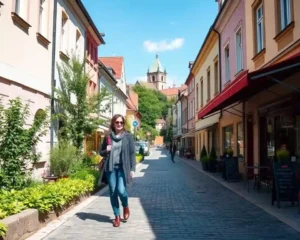Introduction to Rai Van
In the rich cultural tapestry of Southeast Asia, the term Rai Van holds significant meaning. Whether you are a historian, a cultural enthusiast, or someone intrigued by the diverse practices of different societies, understanding Van Tradition provides valuable insight into the region’s history, art, and everyday life. This article delves into what Rai Culture represents, its historical importance, cultural significance, and relevance in modern times. By the end of this article, you will not only be familiar with the term Rai Van but also appreciate its profound impact on various aspects of life in Southeast Asia.

The Historical Origins of Rai Van
Ancient Roots
The concept of Rai Van has ancient roots, with its origins tracing back to early Southeast Asian civilizations. Historically, Rai Culture was more than just a term; it was a way of life permeating society. Archaeological evidence suggests that using Cultural Van dates back to the early days of the region’s development, where it was associated with certain religious and spiritual practices. The term itself has evolved over the centuries. Adapting to the changing dynamics of the societies in which it was prevalent.
Evolution Over Time
As Southeast Asia progressed through different eras, from ancient kingdoms to colonial times, the role and interpretation of Rai Culture also evolved. What began as a term linked to spiritual practices expanded into a broader cultural symbol. Encompassing various elements of daily life. Including art, music, and community rituals. Each generation added its layer of meaning to Cultural Van, making it a dynamic and versatile concept that resonated with people from all walks of life.
Cultural Significance of Rai Van
A Symbol of Unity and Identity
In many Southeast Asian communities, Rai Van symbolizes unity and cultural identity. It represents the collective values and beliefs passed down through generations. For instance, in some regions, Rai Culture is celebrated through festivals and community gatherings, where people come together to honour their heritage. These events serve as a reminder of the shared history and the enduring traditions that define the community’s identity.
Artistic Influence
The influence of Rai Van on art cannot be overstated. Traditional Southeast Asian art forms, including painting, sculpture, and textile design, often feature elements inspired by Van Tradition. These art forms’ intricate patterns, vibrant colours, and symbolic motifs reflect the deep connection between Rai Culture and the region’s cultural heritage. Artists often use Rai Culture as a source of inspiration, creating works that pay homage to their ancestors while also pushing the boundaries of contemporary art.
Rai Van in Modern Times
Revival of Traditional Practices
In recent years, there has been a resurgence of interest in traditional practices, including those associated with Rai Van. A growing awareness of the importance of preserving cultural heritage in the face of globalization fuels this revival. Communities across Southeast Asia are making concerted efforts to keep the practices of Cultural Van alive. Whether through educational programs, cultural exhibitions, or the promotion of traditional crafts.
Contemporary Adaptations
While Rai Van remains rooted in tradition, it has also found its place in modern society. Today, Van Tradition is a symbol of cultural pride and a source of inspiration for contemporary lifestyles. For example, the principles of Van Tradition have been integrated into modern fashion, where designers incorporate traditional motifs into their collections. Similarly, the values embodied by Cultural Van are reflected in contemporary music, where traditional rhythms and melodies are blended with modern genres to create unique sounds.
The Global Impact of Rai Van
Cultural Exchange
The global impact of Rai Van extends beyond Southeast Asia. As the world becomes more interconnected, the exchange of cultural ideas has allowed Rai Van to gain recognition on the international stage. This cultural exchange has led to collaborations between Southeast Asian artists and their counterparts from other regions. Resulting in innovative works that showcase the fusion of different artistic traditions.
Tourism and Cultural Preservation
Tourism plays a significant role in the preservation of Rai Van. As travellers worldwide seek authentic cultural experiences, Van Tradition has become a focal point of interest. Cultural tours, workshops, and festivals centred around Van Tradition offer visitors a chance to immerse themselves in Southeast Asian traditions. This promotes cultural awareness and contributes to the preservation of Cultural Van by providing financial support to local communities. “Jennings Beach ”
Challenges and Future Prospects for Rai Van
Balancing Tradition and Modernity
One of the critical challenges facing Rai Van today is the need to balance tradition with modernity. As societies evolve, there is a risk that the original meanings and practices associated with Rai Van may be diluted or lost. To address this challenge, it is essential to find ways to preserve the core values of Cultural Van while also allowing it to adapt to the contemporary world. This requires a collaborative effort between cultural leaders, educators, and policymakers to ensure that Cultural Van continues to thrive for future generations.
The Role of Technology
Technology has the potential to play a significant role in the preservation and promotion of Rai Van’s. Digital platforms, such as social media and online galleries, provide new avenues for sharing and celebrating Rai Culture with a global audience. Virtual reality and augmented reality experiences can also bring Rai Van’s traditions to life in previously unimaginable ways. By embracing technology, communities can ensure that Rai Culture remains relevant in the digital age.
Conclusion: The Enduring Legacy of Rai Van
Rai Van’s journey involves resilience, adaptation, and cultural pride. From its ancient origins to its modern-day interpretations, Rai Van has proven a versatile and timeless concept that inspires and unites people across Southeast Asia and beyond. As we move forward, we must recognize the importance of preserving and promoting Cultural Van as a symbol of cultural identity and a source of inspiration for future generations. Whether through art, music, fashion, or community practices, Cultural Van will undoubtedly continue to leave its mark on the world, reminding us of the rich cultural heritage that defines Southeast Asia.
FAQ’s
How did Rai Van originate?
Rai Van originated in ancient Southeast Asia and evolved over centuries. It started as a spiritual practice and expanded to include cultural and artistic elements.
Why is Rai Van important today?
Rai Van is important today as it symbolizes cultural identity and heritage. It continues to inspire modern art, fashion, and community events, bridging traditional and contemporary worlds.
How is Rai Van celebrated?
Rai Van is celebrated through festivals, art exhibitions, and community gatherings. These events highlight traditional practices and unite people to honour their cultural heritage.








